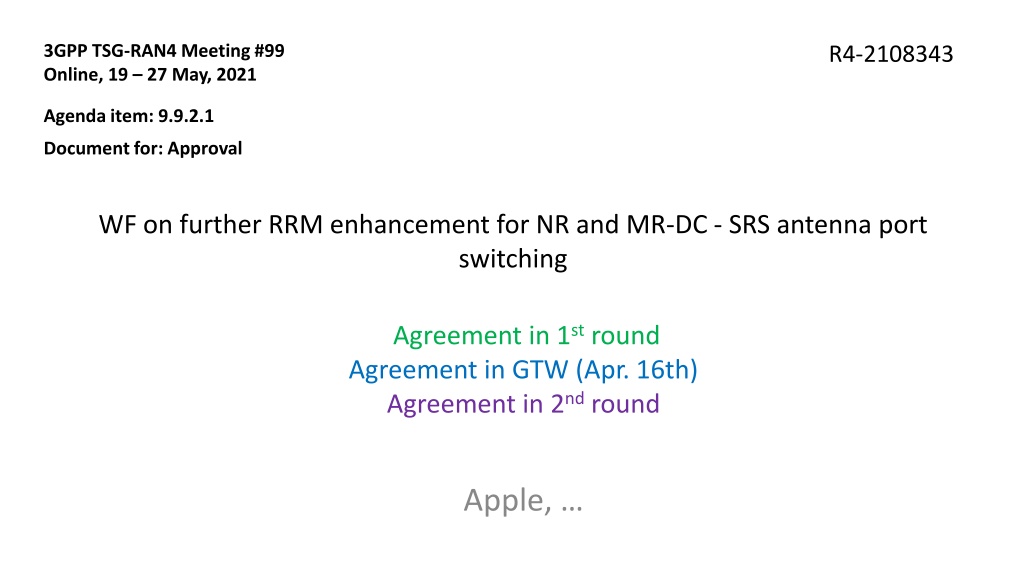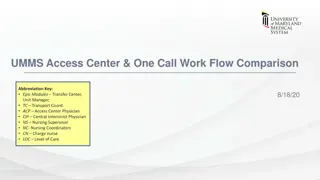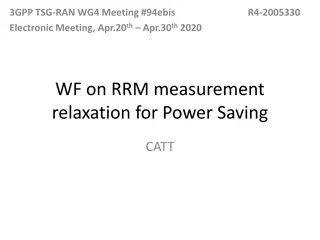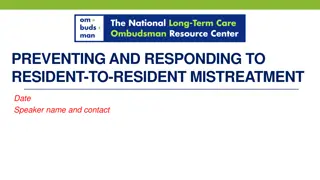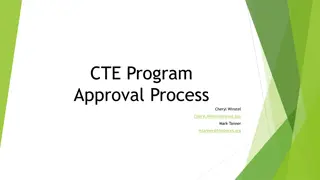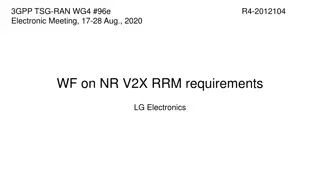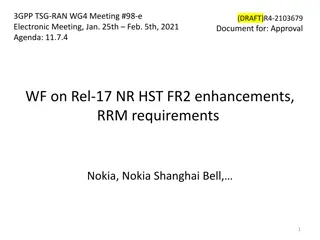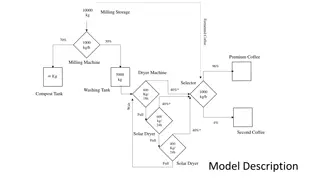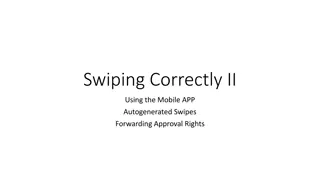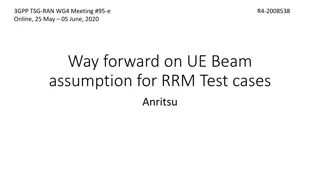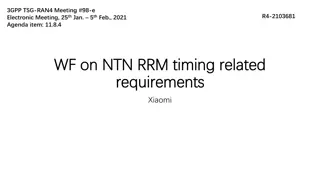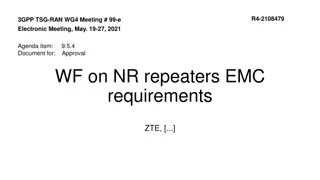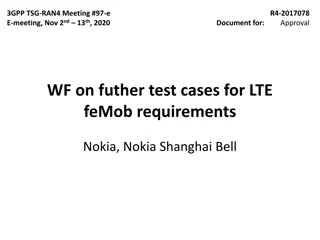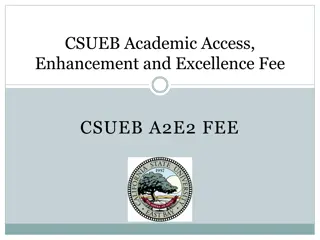Approval Workflow for RRM Enhancement in NR and MR-DC
This document discusses the approval workflow for further RRM enhancement in NR and MR-DC, focusing on SRS antenna port switching agreements and related topics such as scheduling restrictions and impact on RRM requirements. Different options and scopes are considered to address these aspects in the context of LTE and NR technologies.
Download Presentation

Please find below an Image/Link to download the presentation.
The content on the website is provided AS IS for your information and personal use only. It may not be sold, licensed, or shared on other websites without obtaining consent from the author.If you encounter any issues during the download, it is possible that the publisher has removed the file from their server.
You are allowed to download the files provided on this website for personal or commercial use, subject to the condition that they are used lawfully. All files are the property of their respective owners.
The content on the website is provided AS IS for your information and personal use only. It may not be sold, licensed, or shared on other websites without obtaining consent from the author.
E N D
Presentation Transcript
3GPP TSG-RAN4 Meeting #99 Online, 19 27 May, 2021 R4-2108343 Agenda item: 9.9.2.1 Document for: Approval WF on further RRM enhancement for NR and MR-DC - SRS antenna port switching Agreement in 1stround Agreement in GTW (Apr. 16th) Agreement in 2ndround Apple,
Sub-topic 1-1: Scope of SRS antenna switching requirement (1/3) Issue 1-1-1: whether scheduling restriction requirement would be defined in RRM for SRS antenna port switching FFS Option 1 (CATT, CMCC, QC): Don't define the scheduling restriction before and after SRS transmission for the cell with SRS antenna port switching. Option 2 (Ericsson): Yes Option 2a (Apple, OPPO (for further investigation)): UE has scheduling restriction to not transmit PUCCH/PUSCH/SRS or not receive SSB/PDCCH/PDSCH/TRS/CSI-RS for CQI on symbols for SRS antenna port switching guard period, and on symbols for SRS transmission for antenna port switching, and on 1 data symbol before SRS transmission and 1 data symbol after SRS transmission. Option 2b (NEC, HW, Intel, vivo): RAN4 to agree that one OFDM symbol before and after the SRS antenna port switching shall be introduced as scheduling restriction for FR1. Option 2c (HW, MTK, Xiaomi, NEC, Intel, vivo): The scheduling restriction shall be defined before and after SRS transmission considering the 15 us SRS antenna switching time. Option 2d (Ericsson): Scheduling restrictions can be introduced for the case where there is no gap between PUSCH and SRS. Option 3 (Nokia): The position of the transient period needs to be clarified before defining the interruption and the scheduling restriction in RRM spec. Issue 1-1-2: RAN4 requirement scope with different SRS resource configuration FFS: Option 1 (Nokia, Ericsson): RAN4 shall define the requirements for the following scenarios in Rel17 where The SRS resources of a set are transmitted NOT in the same slot, or The SRS resources of a set are transmitted in the same slot with consecutive SRS transmission RAN4 do not define the requirements if the SRS resources of a set are transmitted in the same slot with non-consecutive SRS transmission, before the guard period gets clarified in RAN1 in this scenario.
Sub-topic 1-1: Scope of SRS antenna switching requirement (2/3) Issue 1-1-3: RAN4 requirement scope with LTE SRS antenna port switching Agreement: LTE SRS antenna port switching is out of scope of this R17 FeRRM WI, and no need to discuss.
Sub-topic 1-2: Impact of SRS antenna port switching to other requirements (1/3) Issue 1-2-1: Impact of SRS antenna port switching to RRM requirements in NR-SA Agreement: No impact to NR measurement requirements relevant to measurements based on SSB/CSI-RS due to NR SRS antenna switching, as NR measurements are always prioritized. The above-mentioned NR measurement requirements is FFS: Option 1a: NR measurement requirements including serving/neighboring cell L3 measurement, L1- RSRP/L1-SINR and RLM/BFD/CBD measurement Option 1b (Nokia): NR measurement requirements including serving/neighboring cell L3 measurement. Issue 1-2-2: Impact of SRS antenna port switching to RRM requirements in EN-DC or NE-DC FFS Option 1 (Apple, QC, CATT(first two sub-bullets), NEC, HW, LG, Xiaomi, OPPO, Ericsson, Intel, vivo): In EN-DC and NE-DC operation, NR SRS antenna switching colliding with E-UTRA measurement Interruptions on E-UTRA measurement in the interrupted carrier group are allowed due to NR SRS antenna switching, but NOT allowed due to NR SRS antenna switching for the carriers not in the interrupted carrier group. Additional delay can be expected on E-UTRA measurement in the interrupted carrier group when UE is configured to perform NR SRS antenna switching. NR SRS antenna switching is allowed to be dropped when colliding with E-UTRA measurement in the interrupted carrier group. Option 2 (Nokia): Add one note indicating the DL may be affected due to SRS antenna switching if txSwitchImpactToRx is configured.
Sub-topic 1-2: Impact of SRS antenna port switching to other requirements (2/3) Issue 1-2-3: Impact of SRS antenna port switching to RRM requirements in NR-DC FFS: Option 1 (Apple, CATT, NEC, HW, vivo, QC, LG, Xiaomi, OPPO, Ericsson): No impact to NR measurement requirements relevant to measurements based on SSB/CSI-RS due to NR SRS antenna switching, as NR measurements are always prioritized Option 2 (Nokia): Add one note indicating the DL may be affected due to SRS antenna switching if txSwitchImpactToRx is configured. Issue 1-2-4: Impact of SRS antenna port switching to other specific RRM requirements FFS: Option 1 (CATT, Apple/OPPO(NR based), Ericsson(in same CG)): The requirement for handover, BWP switching, SCell activation/deactivation should not be impacted by SRS antenna port switching. Issue 1-2-5: Impact of SRS antenna port switching to timing requirements FFS: Option 1 (HW, CATT, Apple, QC, Xiaomi, OPPO, vivo, Nokia): No need to consider impact to timing requirements for SRS antenna switching. Option 2 (Ericsson, NEC): Further look into performance impact on timing-based measurements from SRS antenna port switching, and if needed, identify how to mitigate performance degradation. Option 3 (vivo, Apple, QC, Xiaomi, OPPO, Ericsson, vivo): Do not consider impact to timing measurements in R17 SRS antenna port switching in R17 FeRRM WI. New option 4: No need to consider impact to timing requirements (non-positioning related) for SRS antenna switching.
Sub-topic 1-2: Impact of SRS antenna port switching to other requirements (3/3) Issue 1-2-6: Impact of SRS antenna port switching to positioning related requirements Agreement: The impact of SRS antenna switching on positioning related measurement will not be discussed in this Rel-17 FeRRM. Issue 1-2-7: Impact of SRS antenna port switching to CSF and other RS FFS Option 1 (QC, Apple, OPPO): Scheduling of SRS antenna switching should avoid collision to all reference signals including CSI-IM except DMRS and UCI containing CSF report. If collision happens, it is considered as an error case and no UE requirement is imposed. Option 2 (vivo) Scheduling of SRS antenna switching should avoid collision to the following: PUSCH/PUCCH transmission with priority index 1 or DL pre-emption transmission PUSCH/PUCCH transmission carrying HARQ-ACK/positive SR/RI/CRI/SSBRI and/or PRACH PUSCH transmission carrying aperiodic CSI (if periodic/semi-persistent SRS resources are configured)
Sub-topic 1-3: Interruption requirement applicability (1/2) Issue 1-3-1: Interruption requirement applicability FFS: Option 1 (CATT, QC, MTK, Apple, LG, Intel,): SRS antenna switching interruptions on both DL and UL applies to the band combinations signaled in txSwitchImpactToRx or txSwitchWithAnotherBand. Option 2 (HW, vivo, Xiaomi, Nokia): txSwitchImpactToRx indicates the SRS antenna port switching impact to DL only, and txSwitchWithAnotherBand indicates the SRS antenna port switching impact to UL only. Issue 1-3-2: Interruption requirement for UE with or without per-FR MG capability FFS Option 1 (CATT, Xiaomi, MTK, HW, Ericsson, vivo, Nokia): Interruption requirement of SRS antenna port switching will not depend on per-UE or per-FR gap capability. It is not necessary for RAN4 to clarify UE reported capability. Option 2 (Intel, Apple, OPPO): No need to differentiate the requirement for the UE with or without capability of per-FR gap for SRS antenna port switching in RAN4. But it s not expected that txSwitchImpactToRx or txSwitchWithAnotherBand indicates any band combination cross FR1 and FR2 when UE is capable of per-FR MG. Issue 1-3-3: whether same interruption requirement applies to different SRS antenna port switching patterns Agreement: use same set of requirements for different SRS antenna switch patterns.
Sub-topic 1-3: Interruption requirement applicability (2/2) Issue 1-3-4: Would the interruption requirement differentiate between sync and async cases? FFS Option 1 (Intel, Xiaomi, OPPO, HW, vivo, MTK, Apple, QC): No; one single requirement to cover the synchronous and asynchronous scenarios with or without UL TA. Option 1a (Apple): No, interruption requirement is based on the async case for the minimum requirement. Option 2 (CATT, Ericsson, Nokia): Yes, the interruption requirement can differentiate between sync and async cases. Option 2a (LG): Introduce different interruption length between synchronous and asynchronous depending on UL(SRS antenna port switching)-UL slot or UL(SRS antenna port switching)-DL slot . Issue 1-3-5: txSwitchImpactToRx for intra-band case FFS Option 1 (Intel, Ericsson): txSwitchImpactToRx can t differentiate intra-band contiguous CA and intra-band non-contiguous CA case, it s FFS how to indicate txSwitchImpactToRx for intra-band case. txSwitchImpactToRx is only used to indicate whether UL switching has impact on the DL for intra-band non-contiguous CA case. Option 2 (CATT, MTK, Apple, HW, Nokia) No need to have such clarification in option 1.
Sub-topic 1-4: Interruption requirement design (1/3) Issue 1-4-1: The interruption requirement is defined based on slot level or symbol level FFS: Option 1 (CATT, Intel, Xiaomi, Apple, QC, MTK, HW, vivo): based on slot level Option 2 (HW, Ericsson, NEC, Nokia): based on symbol level Option 3 (LG): Symbol level based interruption should be considered when SRS antenna port switching is configured in flexible slot in synchronous case. Option 4 (vivo, Ericsson): RAN4 should firstly study whether and how network can obtain the interrupted symbol information, when SRS antenna port switching is performed in another band.
Sub-topic 1-4: Interruption requirement design (2/3) Issue 1-4-2: The components within interruption time of SRS antenna port switching in FR1 FFS Option 1 (CATT): all guard symbols, all SRS symbols transmitted on other antenna port, and only one switching time. Option 2 (Xiaomi): Antenna switching time for switching to and switching back outside the SRS transmission symbols should be counted in the interruption time. Option 3(Apple, QC, LG, OPPO): The components within interruption time of SRS antenna port switching in FR1 include: Antenna port switching time between SRS symbols in slot (transient time) SRS transmission time Transient time before and after SRS transmission occasion. Option 4 (CMCC, HW, Ericsson, NEC): The components within interruption time include SRS transmission time and SRS antenna switching time before and after SRS transmission. Option 5 (vivo): For interruption requirements, the interruption time is preferred to include power adjustment period, antenna switching time and SRS transmission time. Option 6 (Nokia): When the SRS resources of a set are not configured in a slot, the UE is allowed an uplink interruption on any of the active serving cells if simultaneous SRS and PUCCH/PUSCH transmissions are not supported by the UE. And the uplink interruption comprises the SRS transmission period and the transient period dependent on the SCS. When the SRS resources of a set are configured in a slot with consecutive SRS transmission, the UE is allowed an uplink interruption on any of the active serving cells if simultaneous SRS and PUCCH/PUSCH transmissions are not supported by the UE. The uplink interruption comprises the SRS transmission periods, the guard period in-between and the transient periods dependent on the SCS. Option 7 (MTK, Apple, QC, Xiaomi, HW, vivo): The components within interruption time of SRS antenna port switching in FR1 include: 6 symbols, and Antenna switching time before and after SRS transmission occasion.
Sub-topic 1-4: Interruption requirement design (3/3) Issue 1-4-3: details of the interruption time in FR1 FFS: Option 1 (Xiaomi, Apple, QC, MTK, HW): Interruption time is specified based on 2 antenna switching time (2*15us) and 6 symbol time Issue 1-4-4: Interruption requirement proposals FFS: Options in issue 1-4-4 in R4-2108148. Up to conclusions from other issues.
Sub-topic 1-5: others Issue 1-5-1: LS to other groups FFS: Options in issue 1-5-1 in R4-2108148. Up to conclusions from other issues in subtopic 1-2 (e.g., issue 1-2-7) .
